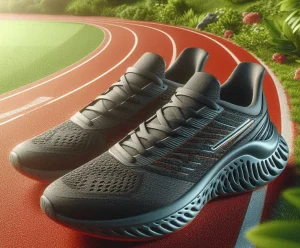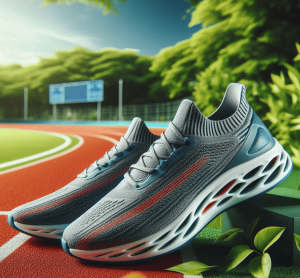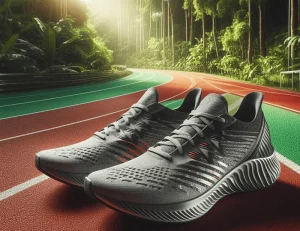Table of Contents
Sports equipment Selecting the right sports equipment is crucial for maximizing performance, ensuring safety, and enhancing the overall enjoyment of any sport. With countless options available in the market, the process can be overwhelming. This guide aims to demystify the selection process, helping you make informed choices that align with your specific sporting needs.

Understanding Your Sporting Needs
The first step in choosing the best sports equipment is to clearly understand your sporting needs. Different sports require different types of equipment, and within each sport, there are various levels of quality and specifications to consider.
Identifying Your Sport
Determine the sport you are participating in and the specific requirements it entails. For example, tennis requires a racket and appropriate footwear, while soccer demands cleats, shin guards, and a durable ball. Each sport has its unique set of essential equipment that cannot be overlooked.
Skill Level Assessment
Your skill level significantly influences the type of sports equipment you should invest in. Beginners might not need the high-end gear that professionals use. Conversely, advanced players can benefit from equipment that offers enhanced performance features. Assess whether you are a novice, intermediate, or advanced player to choose equipment that matches your skill level.
Frequency of Use
Consider how often you will be using the equipment. If you play a sport regularly, investing in durable and high-quality gear is worthwhile. On the other hand, if you participate sporadically, mid-range equipment might suffice without compromising too much on quality.
Key Factors to Consider
Choosing the best sports equipment involves evaluating several critical factors. These factors ensure that the equipment you select meets your needs and enhances your sporting experience.
Quality and Durability
High-quality sports equipment is an investment that pays off in the long run. Durable materials and construction ensure that the equipment withstands the rigors of regular use. Look for reputable brands known for their quality standards. Reading reviews and seeking recommendations from experienced players can also guide you towards durable choices.
Fit and Comfort
Comfort is paramount when selecting sports equipment. Ill-fitting gear can lead to discomfort, injuries, and subpar performance. For items like shoes, helmets, and protective gear, ensure they fit well and provide adequate support. Many stores offer fitting services to help you find the perfect size.
Safety Features
Safety should never be compromised. Choose equipment that meets safety standards and provides necessary protection. For example, helmets should have proper padding and certifications, while shoes should offer good traction and support to prevent injuries. Always prioritize safety features, especially in high-contact sports.
Performance Enhancements
Advanced sports equipment often includes features designed to enhance performance. This can include lightweight materials for faster movement, ergonomic designs for better control, or technological integrations like shock absorbers in tennis rackets. Assess these enhancements and determine if they align with your performance goals.
Cost and Budget
Budget is an important consideration. While high-end equipment offers numerous benefits, it can be expensive. Determine your budget and try to strike a balance between quality and cost. There are often mid-range options that offer good quality at a more affordable price. Remember, the most expensive option is not always the best one for your needs.
Sport-Specific Equipment Guide
Different sports have unique equipment requirements. Here’s a detailed look at the essential sports equipment for various popular sports.
Football (Soccer)
- Cleats: Ensure a good fit with appropriate studs for the playing surface (firm ground, soft ground, or artificial turf).
- Shin Guards: Opt for durable materials that offer adequate protection without restricting movement.
- Soccer Ball: Choose a ball with the right size and weight for your age group and playing level.
- Goalkeeper Gloves (if applicable): Look for gloves with good grip and cushioning to protect your hands.
Basketball
- Basketball Shoes: High-top shoes provide ankle support, while low-top shoes offer better mobility. Choose based on your playing style.
- Basketball: Select the right size and material based on whether you play indoors or outdoors.
- Protective Gear: Mouthguards and knee pads can prevent injuries during intense play.
Tennis
- Tennis Racket: Consider factors like weight, grip size, and string tension. Beginners might prefer a racket with a larger head size for a bigger sweet spot.
- Tennis Balls: Choose balls that match the court surface (hard, clay, or grass).
- Footwear: Tennis shoes should offer good lateral support and cushioning to handle quick movements.
Running
- Running Shoes: Focus on comfort, fit, and support. Consider whether you need stability shoes, neutral shoes, or cushioned shoes based on your foot type and running style.
- Apparel: Moisture-wicking fabrics can keep you comfortable during runs. Compression gear can enhance performance and recovery.
- Accessories: Items like hydration packs, running watches, and reflective gear for safety can enhance your running experience.
Swimming
- Swimsuit: Competitive swimmers need streamlined suits, while casual swimmers might prefer comfort and durability.
- Goggles: Look for anti-fog and UV protection features. Ensure a snug fit to prevent water leakage.
- Swim Cap: Caps reduce drag and protect your hair from chlorine.
Tips for Purchasing Sports Equipment
Research and Reviews
Before making a purchase, conduct thorough research. Online reviews, expert opinions, and user feedback can provide valuable insights into the performance and durability of different products. Trusted review sites and sports forums can be excellent resources.
Try Before You Buy
Whenever possible, try the equipment before purchasing. This is especially important for items like shoes, rackets, and protective gear. Visiting a store allows you to test the fit, comfort, and functionality, ensuring you make an informed decision.
Consider Second-Hand Options
For those on a tight budget, second-hand sports equipment can be a viable option. Many stores and online platforms offer gently used gear at a fraction of the cost. Ensure that second-hand equipment is in good condition and meets safety standards before purchasing.
Warranty and Return Policies
Check the warranty and return policies of the equipment you are buying. Reputable brands often offer warranties on their products, providing peace of mind in case of defects or issues. Understanding the return policy is also crucial, especially when purchasing online.
Maintaining Your Sports Equipment
Proper maintenance extends the lifespan of your sports equipment and ensures it remains in good working condition.
Cleaning and Storage
Regular cleaning is essential to keep your equipment in top shape. Follow manufacturer guidelines for cleaning different types of equipment. Proper storage is equally important. Store items like rackets and bats in a dry, cool place to prevent warping or damage.
Routine Inspections
Regularly inspect your sports equipment for signs of wear and tear. Look for loose stitching, cracks, or other damages that could compromise safety and performance. Addressing issues promptly can prevent injuries and prolong the equipment’s lifespan.
Repairs and Replacements
Some equipment may require occasional repairs. Learn basic repair skills for items like shoes and rackets, or seek professional help when needed. Know when it’s time to replace worn-out gear to maintain optimal performance and safety.
Sports equipment
Choosing the best sports equipment requires a thoughtful approach, considering factors like quality, fit, safety, and cost. Understanding your specific sporting needs and doing thorough research can guide you towards the right choices. Whether you’re a beginner or an advanced player, investing in the right equipment can significantly enhance your performance and enjoyment of the sport. Remember to maintain your equipment well to ensure it serves you effectively for a long time. With the right gear, you’ll be well-equipped to excel in your chosen sport and enjoy every moment of play.






More Stories
Unlock Lasting Strength with Stylish and Supportive Mens Joggers Shoes
Transform Your Runs with These Powerful Running Shoes Built for Pure Comfort
Discover the Best Running Shoes Ever for an Unstoppable Performance Boost